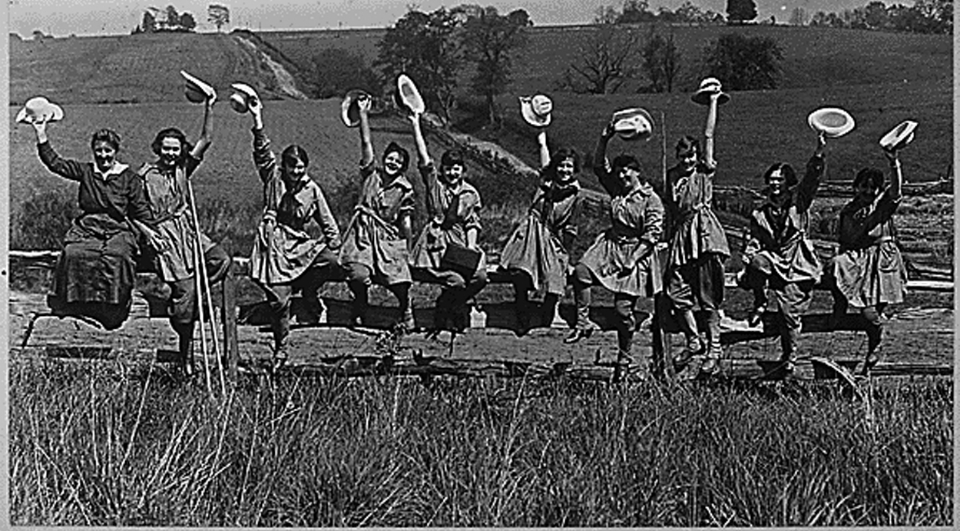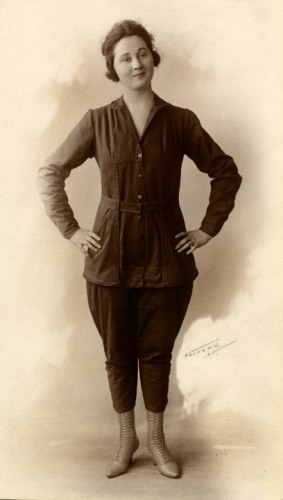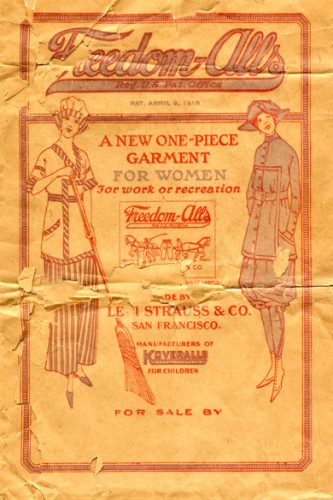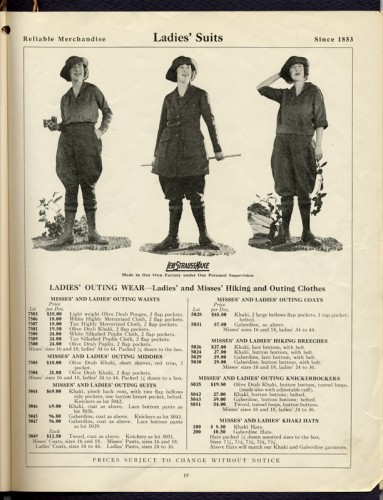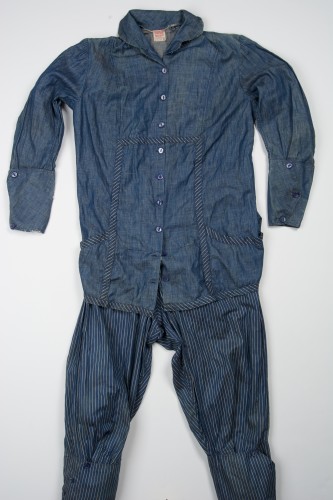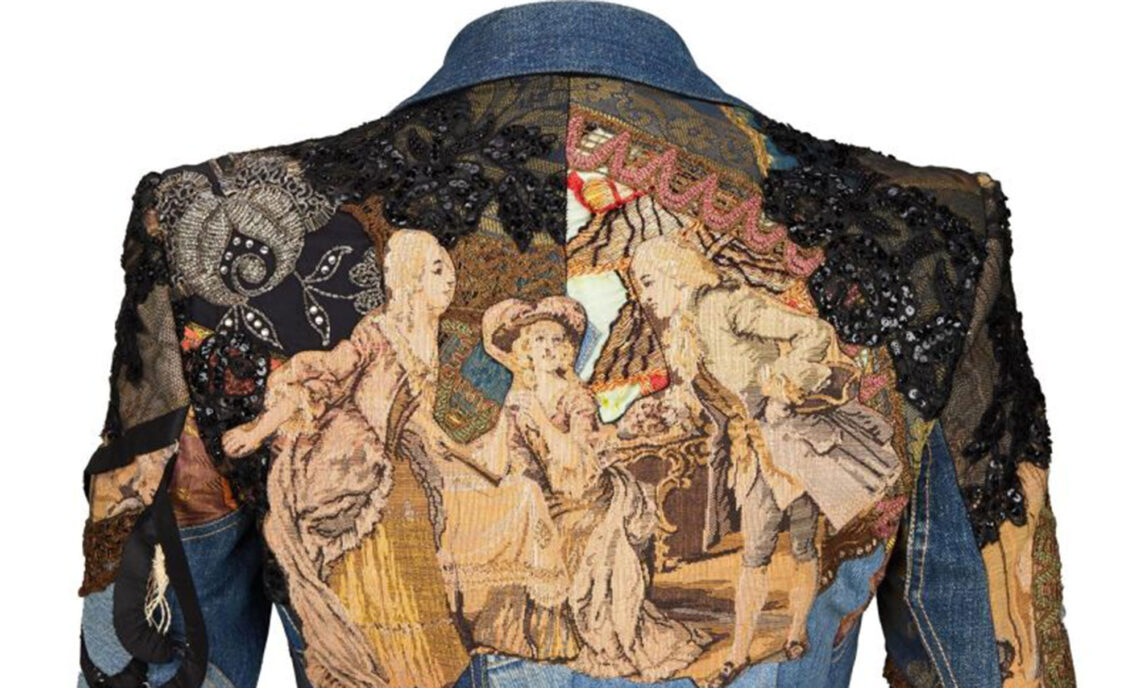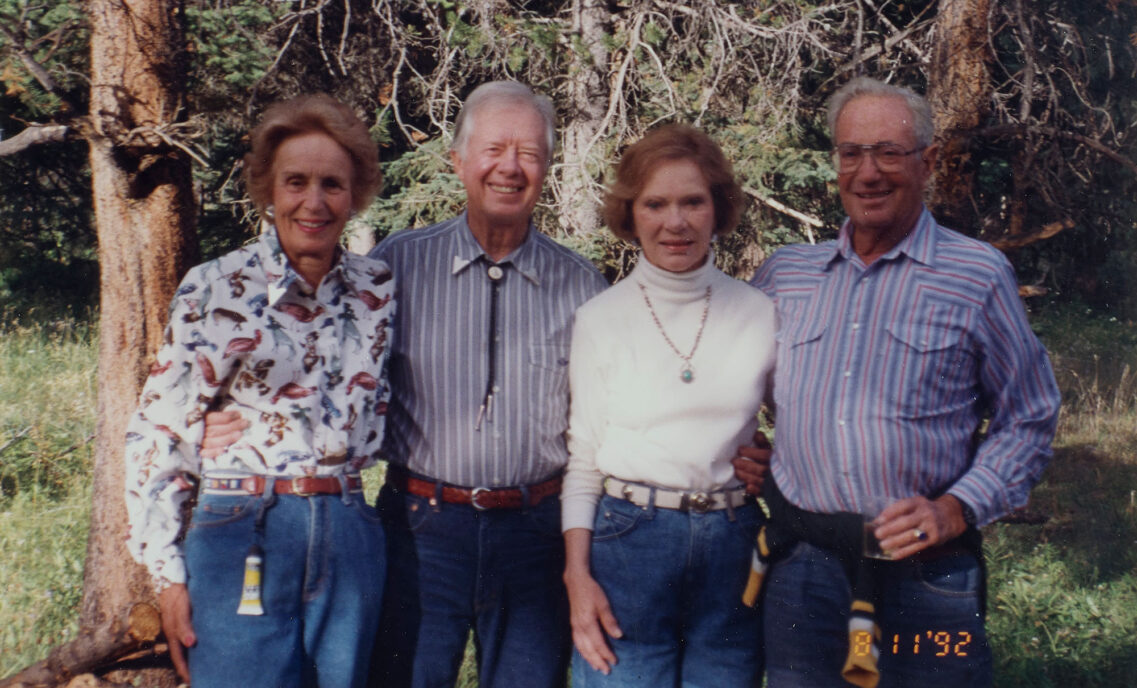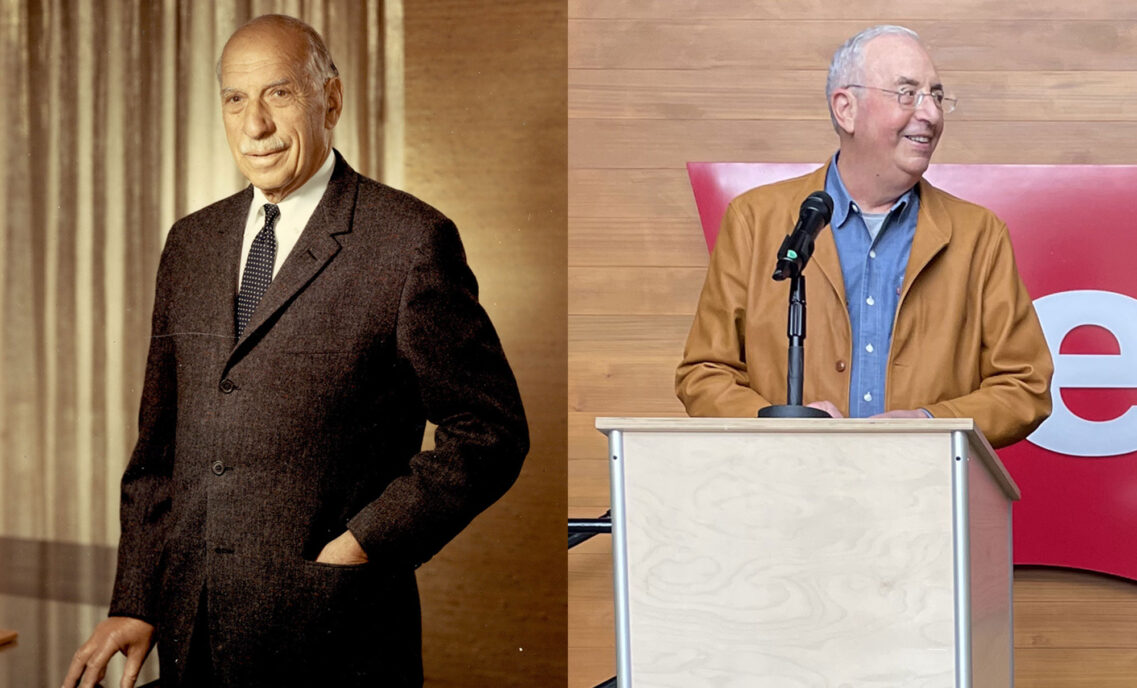Before the world was talking about the importance of giving women the freedom to lean in, have it all, and act #LikeaGirl, Levi Strauss & Co. was creating garments that gave women the fashion freedom to adapt to their changing roles in society.
In 1934, we introduced the first blue jean made specifically for women. Lady Levi’s weren’t the first garment we made for women, however. That distinction belongs to Freedom-Alls, introduced in 1918.
Women were playing a larger role in American society, especially in the West, where the company’s retail customers were. It was the perfect time to meet the needs of a new market. The result, however, was a rather odd garment.
Freedom-Alls were a sort of belted tunic over harem pants which were called trousers (and had a drop seat). These buckled near the ankle to be worn with boots. The trousers could also be worn loose. There were two versions: one in “Heavy Khaki” and the other in a lightweight cotton. In the latter, the tunic came in solid blue, pink or green, and the trousers had alternating stripes of white and whatever color the tunic was.
The name itself is very revealing. The word “Freedom” was used because America had entered World War I the previous year, and this patriotic name was given to many items of personal or household use. The word also referred to the freedom of movement that women experienced when they wore Freedom-Alls. Not only that, six years earlier the company had introduced Koveralls, a wildly successful playsuit for kids. We decided to stick with this style of product naming.
The advertising for Freedom-Alls showed women doing both housework (a traditional activity) and some form of physical exercise, like hiking (not so traditional). Western women were taking advantage of the wide open spaces: driving cars, taking up nature photography, wandering through the new national parks. LS&Co. knew this, and created clothing that liberated, rather than restricted the new, female consumers.
Levi Strauss & Co. patented the design of Freedom-Alls, but they didn’t really catch on. They disappeared from company catalogs and price lists around 1919. But it wasn’t a total loss.
Freedom-Alls paved the way for the company’s introduction of sturdy khaki hiking clothing in the early 1920s. Women were spending even more time outdoors as the Jazz Age got underway, and western women needed something a little tougher than cotton garments. By 1922 LS&Co. had a line of khaki coats, short pants called “knickerbockers” which buckled at the knee, and blouses. The collection was called “Hiking Togs” and it was perfectly suited to life in the West.
The Archives has a coat and a few pairs of the khaki knickerbockers on its shelves. But because of its rarity, the Archives only has one example of Freedom-Alls, in blue with blue/white striped trousers. It’s truly one of the treasures of the Womenswear collection.
Feature photo: Marion Doss via Flickr CC



